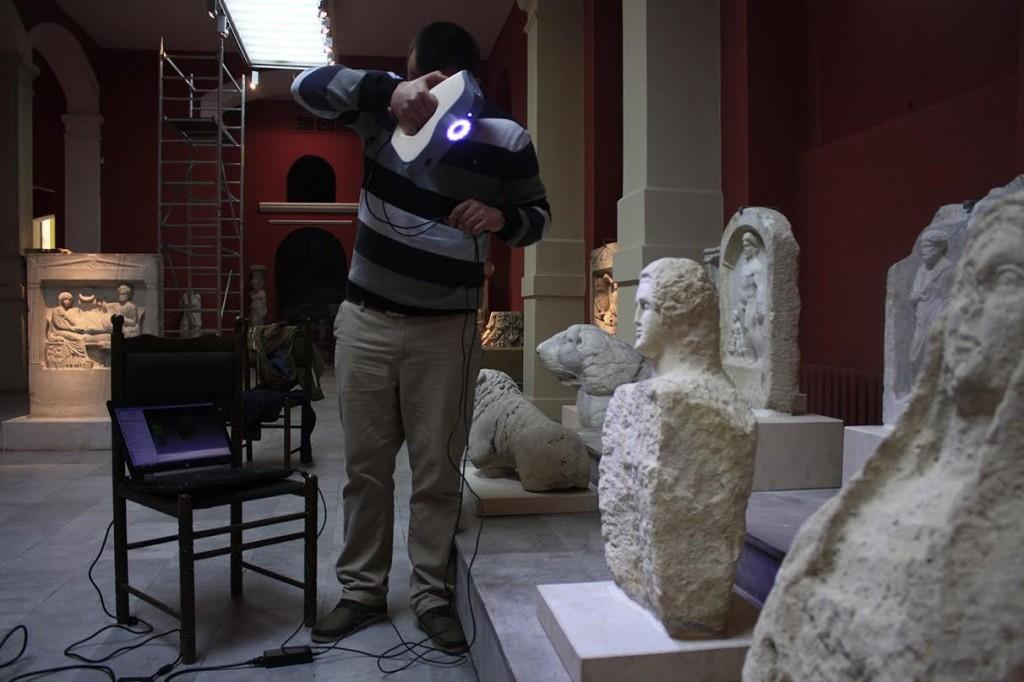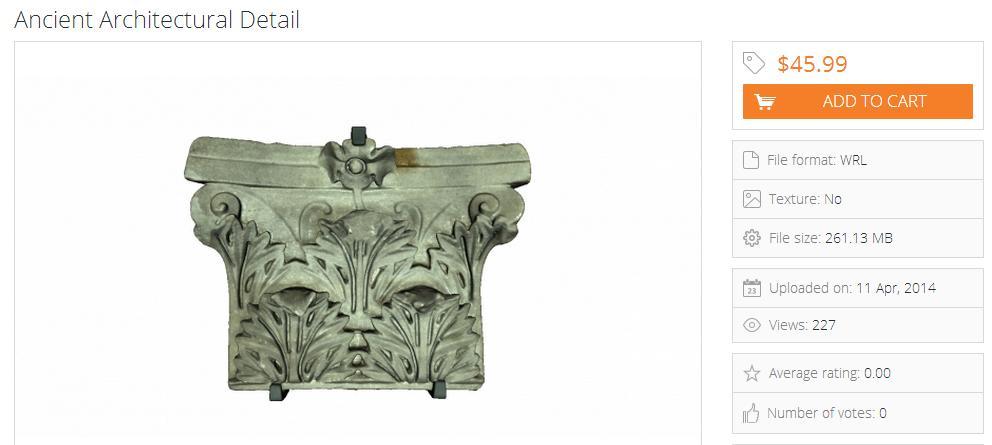![]() Just yesterday, we published a story about the UCL Petrie Museum of Egyptian Archaeology, beginning to scan and upload interactive 3D models of their artifacts for anyone to view. Today, we learn that things are beginning to progress even more quickly for the digitalization of museum artifacts.
Just yesterday, we published a story about the UCL Petrie Museum of Egyptian Archaeology, beginning to scan and upload interactive 3D models of their artifacts for anyone to view. Today, we learn that things are beginning to progress even more quickly for the digitalization of museum artifacts.
Threeding, a marketplace for digital 3D designs, which just launched a redesign of their entire website yesterday, has informed 3DPrint.com that they have signed contracts with several museums to 3D scan and sell 3D printable copies of their artifacts.
“It is especially interesting our cooperation with the archeological museum of the Black Sea City of Varna,” explained Stan Partalev, Founder of Threeding.com to 3DPrint.com this morning. “The city has been under the control Thracians Kingdom, Greeks, Roman, Ottoman Empire and Bulgarians.”
Currently there are 20 objects from the museum in Varna, but by next week, they expect to add over 100 more. On top of this, there are 23 objects currently available for purchase and print from the Historical Museum of Pernik.
“Our aim is to add in our portfolio at least 1000 objects in the next couple of months,” said Partalev. “We have the privilege to be based in one of the richest regions in terms of historical artifacts, so we have a lot to scan.”
Also on Threeding, are 40-50 antiques provided from private collections. Threeding is currenlty scanning objects from other museums as well, including models from the Art Academy of Sofia, and the Hunters Museum. Located in Bulgaria, Threeding is currently negotiating with most of the Bulgarian museums as well as a couple of museums in Greece, to digitalize and sell their artifacts.
So you may wonder exactly how they have managed to have these famous museums agree to cooperate.
“We usually work with a very simple model; we 3D scan artifacts and pay royalty for each sale through the website,” said Partalev to 3DPrint.com. “Furthermore, we give for free the scanned models for education and restoration purposes.”
This could be the start of something special, in the world of ancient history. Imagine all the schools that could have their own 3D printed museums for students to browse and research. It is nearly impossible for students to travel all around the world in order to see these ancient pieces of history. However, if a replica could be printed out on a 3D printer that is located in the school, the possibilities are endless.
Be sure to check out the redesigned Threeding.com. Also check out all the photos of the scanning process that Stan Partalev was nice enough to share with us, in the Threeding discussion thread on 3DPB.com
Subscribe to Our Email Newsletter
Stay up-to-date on all the latest news from the 3D printing industry and receive information and offers from third party vendors.
You May Also Like
Precision at the Microscale: UK Researchers Advance Medical Devices with BMF’s 3D Printing Tech
University of Nottingham researchers are using Boston Micro Fabrication‘s (BMF) 3D printing technology to develop medical devices that improve compatibility with human tissue. Funded by a UK grant, this project...
3D Printing Webinar and Event Roundup: April 21, 2024
It’s another busy week of webinars and events, starting with Hannover Messe in Germany and continuing with Metalcasting Congress, Chinaplas, TechBlick’s Innovation Festival, and more. Stratasys continues its advanced training...
3D Printing Webinar and Event Roundup: March 17, 2024
It’s another busy week of webinars and events, including SALMED 2024 and AM Forum in Berlin. Stratasys continues its in-person training and is offering two webinars, ASTM is holding a...
3D Printed Micro Antenna is 15% Smaller and 6X Lighter
Horizon Microtechnologies has achieved success in creating a high-frequency D-Band horn antenna through micro 3D printing. However, this achievement did not rely solely on 3D printing; it involved a combination...































